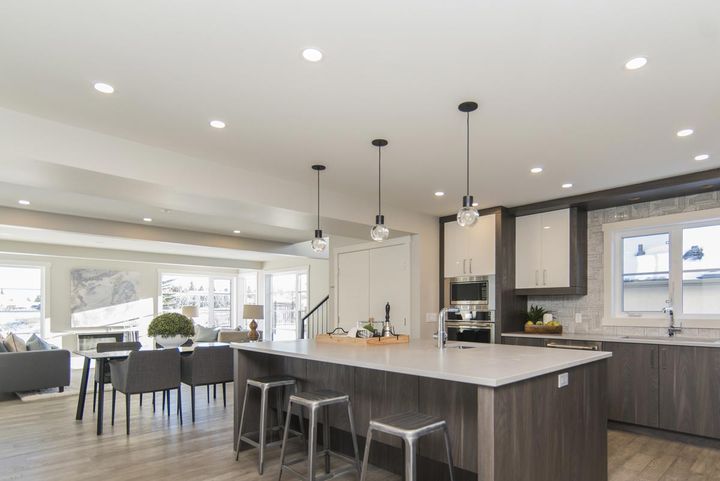Benefits of LED Lighting & Circadian Rhythm

Circadian rhythm is a cycle that tells our bodies when to sleep, rise, eat - regulating many physiological processes. This internal body clock is affected by environmental cues. At the core of circadian rhythm is your relationship with light, which acts as the conductor of many precisely arranged biological processes. To better align your circadian rhythm, understanding lighting design specific to each system is critical.
Human-Centric Lighting, or HCL, draws a line between light and well-being with a foot planted firmly in verified science. Beyond the health benefits that HCL could produce, it has opened up market opportunities for designers, lighting companies, and consumers. Adding light color temperature to the mix, many smart technologies are becoming more integrated in homes to adjust light intensity and temperature to better suit natural cycles at appropriate times of day.
Scientists have linked the nanometers of the change in light so lighting products can simulate a healthy environment. Thus, the birth of circadian rhythm lighting. Companies then married the biologic benefits to the energy savings and long life provided by LED lighting to bring the appropriate outside environment indoors. Some benefits of LED circadian rhythm lighting include:
1) The restoration of normal sleep patterns
This is accomplished because LED circadian lighting assists in the release of melatonin and dopamine in the evening hours to make a person relaxed and tired at night while suppressing these hormones during the day and assisting in the release of cortisol enabling a person to be more alert and active during the day.
2) It eliminates glare to help people see better
People also experience fewer headaches and enjoy better visual perception. With edge-lit LED panels, you further reduce the glare and shadowing that cause depth perception issues and increases visibility.
3) Improves mood, alertness, and productivity
Seasonal affective disorder (SAD) is a serious issue for many people. It can lead to a lack of productivity and depression. By simulating the healthy outdoor environment, a person with SAD is awake and active in the morning, with cortisol released, also aiding with digestion, diabetes and other symptoms. Studies have shown that employees exposed to the appropriate lighting suffer fewer sick days and improved production at work.
4) Saves money and the environment
LED lighting reduces electricity consumption of lighting by up to 85% and lasts at least 50,000 hours. LED does not contain any dangerous metals, lead, or mercury commonly found in some older fluorescent and incandescent bulbs.
5) It's the latest technology and uses fully automated control systems
You'll no long need to manually adjust a facility's lighting to provide the circadian rhythm benefits. Newer systems use wireless control systems that include an automated scheduler and a mesh network. These systems can be integrated with "smart" building systems that control other systems, such as HVAC.
Check back to see new articles and guides , or feel free to click another article to experience more great insights and advice.



